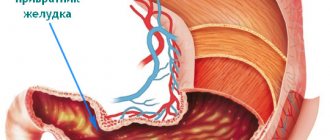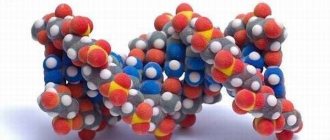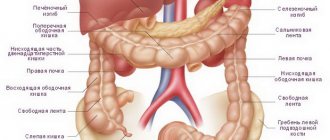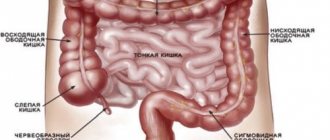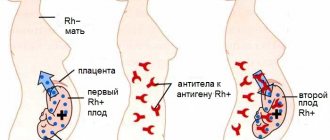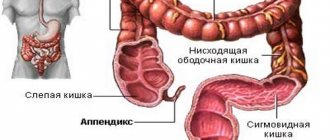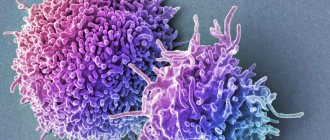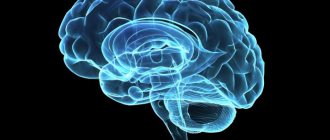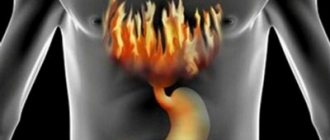Types of enzymes
- Pepsin. An enzyme is a substance that is produced in the stomach. It acts on protein molecules in food, breaking them down into their elementary components - amino acids.
- Trypsin and chymotrypsin. These substances are part of the group of pancreatic enzymes, which are produced by the pancreas and delivered to the duodenum. Here they also affect protein molecules.
- Amylase. An enzyme is a substance that breaks down sugars (carbohydrates). Amylase is produced in the mouth and small intestine. It decomposes one of the main polysaccharides - starch. The result is a small carbohydrate - maltose.
- Maltase. The enzyme also affects carbohydrates. Its specific substrate is maltose. It breaks down into 2 glucose molecules, which are absorbed by the intestinal wall.
- Saharaza. Protein acts on another common disaccharide, sucrose, which is found in any high-carbohydrate food. Carbohydrates break down into fructose and glucose, which are easily absorbed by the body.
- Lactase. A specific enzyme that acts on the carbohydrate from milk - lactose. When it decomposes, other products are obtained - glucose and galactose.
- Nucleases. Enzymes from this group act on nucleic acids - DNA and RNA, which are contained in food. After exposure, substances break down into individual components - nucleotides.
- Nucleotidase. The second group of enzymes that acts on nucleic acids is called nucleotidases. They decompose nucleotides to produce smaller components - nucleosides.
- Carboxypeptidase. The enzyme acts on small protein molecules - peptides. As a result of this process, individual amino acids are obtained.
- Lipase. The substance decomposes fats and lipids entering the digestive system. In this case, their components are formed - alcohol, glycerin and fatty acids.
Read on the topic: How long does it take for food to be digested in the human stomach?
Basic functions of liquid
Liquid performs one of the main functions in the digestion process.
The main properties of gastric juice are provided by the following processes:
- swelling and denaturation of food proteins;
- activation of pepsin;
- antibacterial protection;
- stimulation of pancreatic secretion;
- regulation of gastric motor function;
- breakdown of emulsified fats;
- Castle factor provides erythropoiesis.
Excess digestive enzymes
Excess digestive enzymes are most often observed with a disease such as pancreatitis. The condition is associated with the overproduction of these substances by pancreatic cells and a violation of their excretion into the intestines. In this regard, active inflammation develops in the organ tissue, caused by the action of enzymes.
Signs of pancreatitis may include:
- severe pain in the abdominal area;
- nausea;
- bloating;
- violation of stool character.
A general deterioration in the patient's condition often develops. General weakness, irritability appear, body weight decreases, and normal sleep is disturbed.
How can you reduce or increase the concentration of hydrochloric acid in the stomach?
The normal digestive ability of the gastrointestinal tract lies in the coordinated work of the gastrointestinal tract and other body systems.
Why is hydrochloric acid needed in the stomach?
A sufficient level of secretion ensures the process of food processing and prepares chyme for further absorption of nutrients in the intestine.
Inflammatory diseases of the upper digestive tract lead to disruption of the synthesis of gastric juice. Violation of secretion concentration forms organic and functional changes in the organ. Its lack slows down the breakdown of food components and increases the likelihood of the proliferation of pathogenic bacteria. When there is a lot of hydrochloric acid, it leads to severe inflammation and destruction of the epithelium.
The medications presented in Table 2 help raise or lower stomach acidity.
Table 2. Main groups of drugs affecting the synthesis of hydrochloric acid
| Reduce pH | Increase pH |
| Proton pump blockers | Natural gastric juice |
| H2-histamine blockers | Stimulators of gastric juice synthesis |
| Antacids |
Hydrochloric acid is an important functional component of digestion. An imbalance in the process of production and neutralization of secretions leads to negative changes requiring treatment.
How to identify disturbances in the synthesis of digestive enzymes?
- Stool examination. The detection of undigested food residues in the stool indicates a disruption in the activity of the intestinal enzymatic system. Depending on the nature of the changes, it can be assumed which enzyme is deficient.
- Blood chemistry. The study allows you to assess the patient’s metabolic state, which directly depends on the activity of digestion.
- Study of gastric juice. The technique allows you to evaluate the content of enzymes in the stomach cavity, which indicates the activity of digestion.
- Study of pancreatic enzymes. The analysis makes it possible to study in detail the amount of organ secretion, thanks to which the cause of the violations can be established.
- Genetic research. Some enzymopathies may be hereditary. They are diagnosed by analyzing human DNA, in which genes corresponding to a particular disease are found.
Compound
Colorless, strongly acidic (pH 1-1.5 in humans), slightly opalescent liquid. Gastric juice contains 99.4% water (H 2 O), in which the main components are dissolved - enzymes, hydrochloric acid and lucoids.
The main inorganic component of gastric juice is hydrochloric acid in a free and protein-bound state. The composition also includes chlorides, phosphates, sulfates, sodium carbonates, potassium, calcium, etc.
Among the organic compounds are proteins, mucin (mucus), lysozyme, enzymes (enzymes) pepsin, metabolic products.
Hydrochloric acid activates enzymes, facilitates the breakdown of proteins, causing their denaturation and swelling, determines the bactericidal properties of gastric juice (prevents the development of putrefactive processes in the stomach), and stimulates the release of intestinal hormones. In some disorders of gastric function, the content of hydrochloric acid in gastric juice may increase or decrease until it is completely absent (tachilia). Mucus, which includes mucoproteins, protects the walls of the stomach from mechanical and chemical irritants. Gastric juice contains “intrinsic factor” (Castle factor), which promotes the absorption of Vitamin B 12.
Basic principles of therapy for enzyme disorders
A change in the production of digestive enzymes is a reason to consult a doctor. After a comprehensive examination, the doctor will determine the cause of the disorders and prescribe appropriate treatment. It is not recommended to deal with pathology on your own.
An important component of treatment is proper nutrition. The patient is prescribed an appropriate diet, which is aimed at facilitating the digestion of food. It is necessary to avoid overeating, as this provokes intestinal disorders. Patients are prescribed drug therapy, including replacement treatment with enzyme preparations.
Specific medications and their dosages are selected by the doctor.
Change in color and odor of gastric juice
Normally, colorless gastric juice can acquire the following color:
- yellowish-green in case of bile admixture
- brown - due to an admixture of blood that has been in the stomach for a long time
- streaks of blood in the gastric juice are usually the result of damage to the mucous membrane or bleeding from the upper respiratory tract
The smell of gastric juice is normally practically absent. If gastric juice develops a putrid, unpleasant odor, this may indicate stagnation in the stomach, a sharp decrease in the amount of hydrochloric acid, disintegrating tumors, and protein rotting.
Why is there mucus in stomach juice?
The composition of intestinal and gastric juices includes mucus. Its significance is that it helps to neutralize the aggressive effects of acid. This is the answer to the question why gastric juice does not damage the walls of the organ. Moreover, mucus also protects against the damaging effects of pepsin (and in its absence, a person develops symptoms of dyspepsia).
Mucus helps coat the bolus of food, which improves digestive function. Daily mucus production may vary. The component properties are as follows:
- regulation of the excretory function of glands that produce hydrochloric acid,
- enveloping the mucous membrane,
- enveloping food
- influence on the level of gastric juice secretion.
Note! An increase in the amount of mucus in the stomach is a symptom of dangerous pathologies. Their treatment involves taking certain medications and adjusting the diet. There is no need to self-medicate, as this can harm the body.
DO YOU STILL THINK THAT IT IS HARD TO CURE YOUR STOMACH?
Judging by the fact that you are now reading these lines, victory in the fight against diseases of the gastrointestinal tract is not yet on your side.
Have you already thought about surgery? This is understandable, because the stomach is a very important organ, and its proper functioning is the key to health and well-being. Frequent abdominal pain, heartburn, bloating, belching, nausea, bowel dysfunction. All these symptoms are familiar to you firsthand.
But perhaps it would be more correct to treat not the effect, but the cause? We recommend reading the story of Galina Savina, how she cured her stomach. Read the article >>
Enzymes or enzymes are important participants in the digestive process that help us digest food well and absorb its beneficial substances, turning them from complex to simple. By and large, enzymes are chemical substances (proteins) that speed up the digestion process, i.e. are its catalyst.
Obviously, each of us at least once in our lives has encountered such unpleasant health phenomena as heaviness in the stomach, stagnation of food in the stomach and intestines, diarrhea or constipation. Almost each of these phenomena is caused by malfunctions of digestive enzymes. Another not-so-good news is that as we age, the human body produces less and less of its own enzymes to digest food, which can significantly affect health and well-being.
General Medicine
In medicine, pepsin is widely used as a medicine for certain diseases associated with a lack of production of this enzyme in the patient's stomach. The rennet enzyme pepsin is extracted from pork stomach mucous membranes. The drug is available in the form of tablets, packed in blisters, with an admixture of acidine, or in the form of powders. Pepsin is also included in some combination medications. Has ATC code A09AA03. An example of a pathology for which pepsin-containing drugs are prescribed is Ménétrier's disease.
What is this substance?
Pepsin is the main enzyme of the digestive system of the endopeptidase class. The enzyme is initially produced as pepsinogen by the glands of the stomach, but under the influence of gastric juice it is converted into pepsin. The protein-digesting enzyme supplies amino acids to the entire body, which are used as a source of energy, and are broken down in the stomach only under the influence of enzymes. They also produce their own proteins, cell walls and other substances and structures.
Classification by type
Table of types of endopeptidases:
| Group name | Stomach enzymes | a brief description of | At what acidity level are they active? |
| A | Uropepsin | Partially excreted through urine and used to analyze the proteolytic activity of gastric juice | Hydrolyzes at 1.5-2 pH |
| WITH | Cathepsin or gastrixin | Located inside the cell and cuts peptide bonds | Pepsin and gastrixin participate in hydrolysis at pH 3.2-3.5 |
| IN | Parapepsin or gelatinase | Separates gelatin and connective tissue proteins | The pH for pepsin should not be higher than 5.6 |
| D | Rennin or chymosis | An enzyme involved in the process of breaking down milk with the help of calcium. | Operate in a neutral environment |
Enzymes act on protein only in an acidic environment. Catalysts are produced by glands located near the walls of the fundus of the stomach, the place with the lowest pH level. Gastricin is found in all parts of the stomach. Enzymes completely break down proteins, and their breakdown product is soluble in water.
Indicator value
During the period of digestion or presence of food in the intestinal tract, the value of the indicator is 1.6−2. The medium is characterized by a strong acidic reaction. The indicator can have the maximum possible value (pH = 8).
Some gastric diseases are accompanied by a high pH value. The main functions of the cells of the inner lining of the organ are to produce juice components. In 24 hours, up to two liters of liquid can be released in the digestive system of an adult. To determine the value of the indicator, the patient is prescribed pH testing. The role of the daily amount of gastric juice is basal secretion - fluid at rest. She should not be stimulated by food . The essence of the method:
- fluid intake;
- composition research.
The obtained result is compared with the table of norms. Men should produce 80−100 ml/h of juice, 2.5−5.0 mmol/h of hydrochloric acid and 20−35 mg/h of pepsin. The maximum daily amount of gastric juice is 22-29 for a man, and 16-21 for a woman.
Digestion process
Nutrients begin to be broken down in the mouth . Dextrins are formed from polysaccharides. Food enters the stomach. The juice secreted by the walls digests up to 35% of carbohydrates. If this mechanism is disrupted, diseases develop in which the patient experiences a feeling of heaviness, stomach pain, heartburn, and belching.
The digestion process is accompanied by the destruction of its constituent components. They change in the stomach every five hours. After secondary processing, the remaining substances from the food are separated. Subsequent digestion is simplified.
Hypersecretion is manifested by increased secretion of juice and increased acidity. Similar phenomena are observed after taking spicy seasonings, certain foods, and alcoholic beverages. Prolonged stress and negative emotions also irritate the stomach. Secretion increases during gastritis, ulcers and other pathologies of the digestive system.
Signs of acidity in the stomach - vomiting with heartburn. To normalize the secretion, a diet and taking antispasmodics (No-Shpa) are indicated. To facilitate the absorption and digestion of foods, Mezim and Pancreatin are taken. Low juice production indicates the presence of infection when the walls of the organ are damaged. If any deviations from the norm occur, it is recommended to undergo a comprehensive examination. Therapy is carried out after making an accurate diagnosis, determining the acidity and composition of digestive juice. Prevention of acidity and other pathologies of the gastrointestinal tract consists of proper nutrition and an active life.
